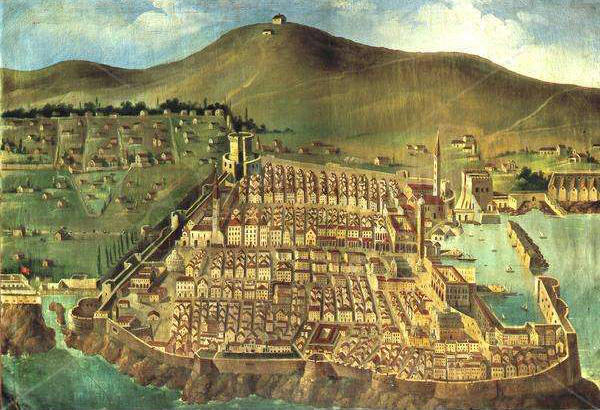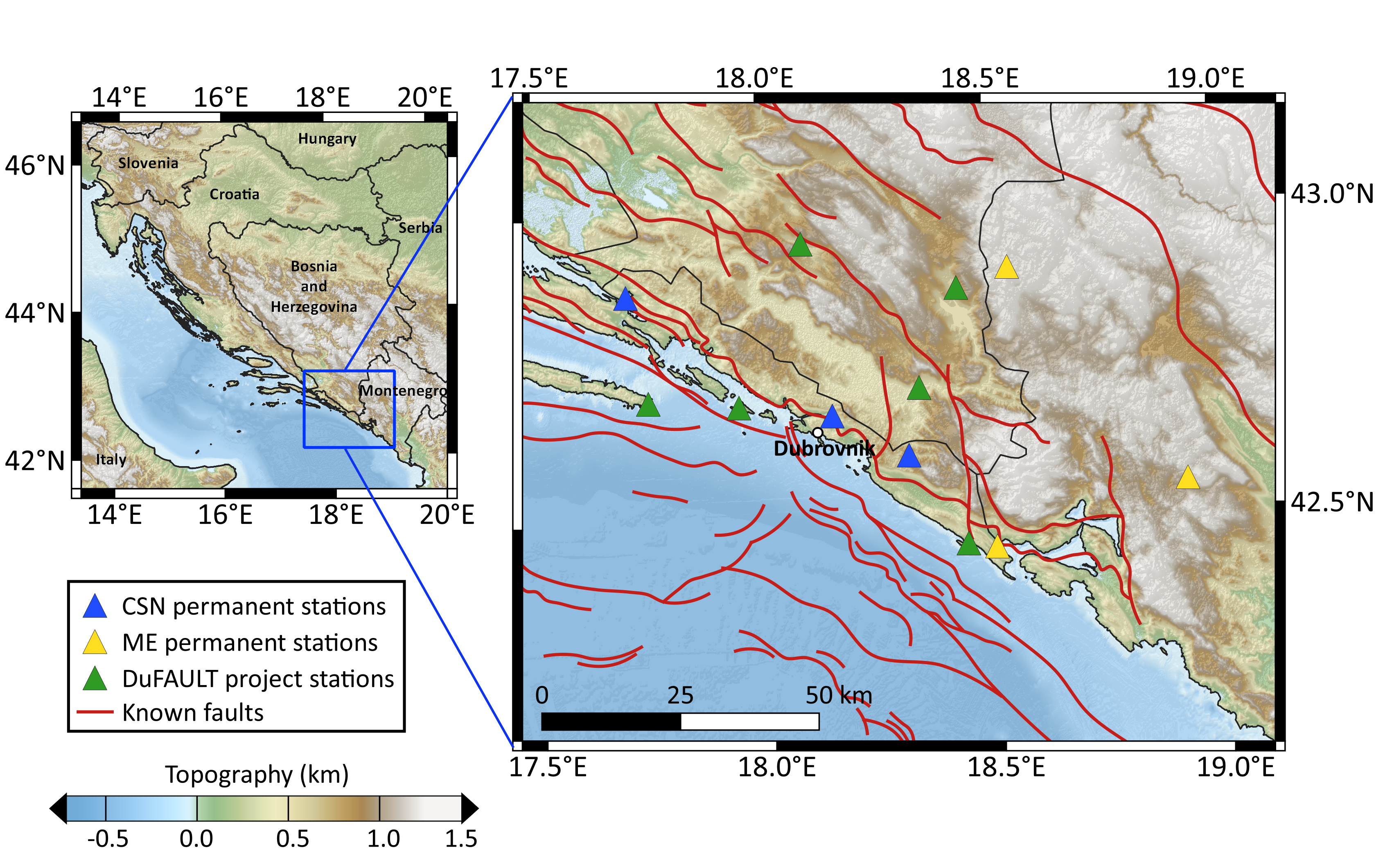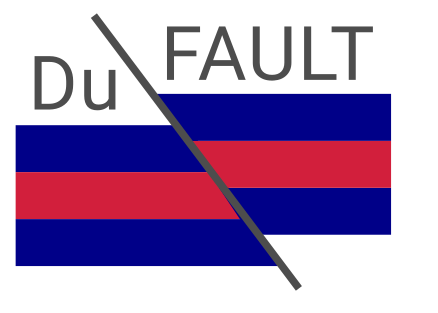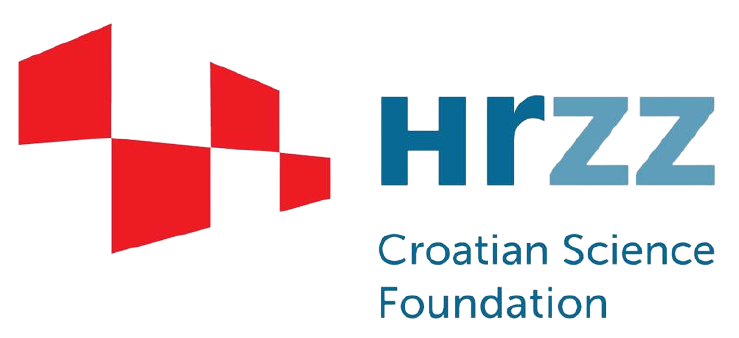The southern part of Croatia, i.e. the Dubrovnik fault system, is seismically one of the most active areas in Croatia and one of the most active regions in Europe. The historical seismicity catalogue for this region includes numerous strong events, like the devastating Dubrovnik earthquake in 1667 which is one of the strongest earthquakes that happened in Croatia, or the 1996 earthquake that hit the area of Ston and Slano.
 Artistic view of Dubrovnik before the earthquake of 1667, work of an unknown author.
Artistic view of Dubrovnik before the earthquake of 1667, work of an unknown author.
In order to better assess the seismic hazard of this area, it is necessary to know active and seismogenic faults where strong earthquakes can occur, precisely determent hypocenters of even weak earthquakes, and apply a geophysical model that realistically reflects the Earth's structure and rock properties. All of these points are still under-researched and this project will try to give us the answers.
Analysis of surface wave phase and group velocities will enable the creation of 3D S-wave velocities models in the crust. We will analyze the structure of P-wave velocities from existing geophysical and geological data and use microseismic disturbance to monitor possible changes in crust elastic properties. Seismological stations which will be settled up as part of the project will enable a more precise location of earthquake focus together with the application of modern source locating methods. The collected and analyzed data will allow the earthquake simulation, indicate locations with strong vibration, and help us understand the propagation of seismic waves.
Project goals:
- Data collection and establishment of a local seismic network - semi-permanent seismic observatory.
- A new structural model of the Earth's crust in the Dubrovnik area - a complete 3D model of the seismic velocities.
- Application to earthquake simulations, seismic hazard and tectonic interpretation scenarios - calculation of seismogenic potential and estimation of expected ground movement.
- Contribution to raising seismic risk awareness - public lectures and scientific publications.



